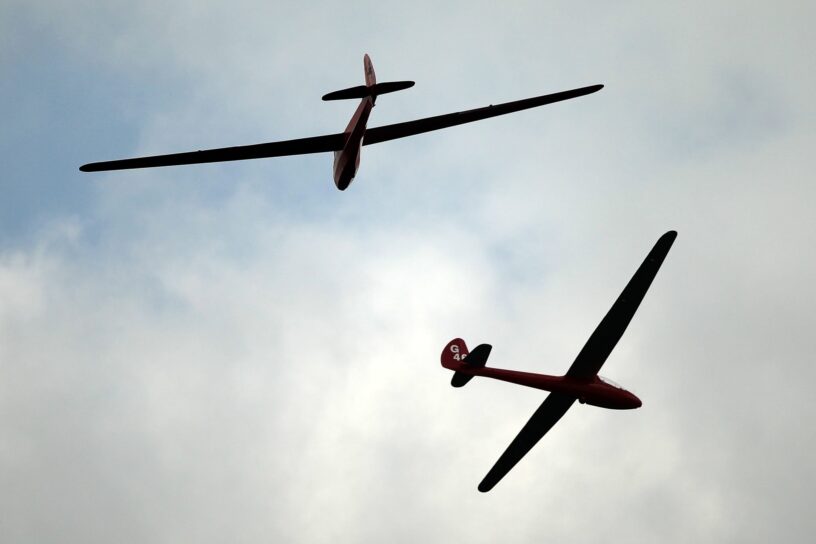Birds don’t always flap their wings to fly, sometimes they take advantage of warm air known as thermals, which gives them aloft for hours without spending a lot of energy. Well, scientists are trying to replicate this with AI-powered gliders and if everything goes well it will help aircraft to do the same.
ALSO READ: Rolls-Royce Is The Latest To Develop A Flying Taxi; Unveiled EVTOL Concept!
AI-Powered Gliders (UAVs)
As per a paper published in the journal Nature, researchers from universities in the US and Italy used machine learning to train an algorithm to control a glider to navigate thermals. This is not new, Microsoft published similar work with gliders last year, but it’s the first time that data from real flights have been used to improve AI’s performance.

An image of the AI-controlled glider, a Parkzone Radian Pro, exploring the skies. (Yes, it’s that tiny thing in the middle.) Image: Jerome Wong-Ng and Gautam Reddy
This work brings out the fate of future autonomous aircraft and shows how it can take advantage of thermals rather than relying on noisy and energy-intensive powered flight. It also suggests that AI might be able to help us figure out how exactly birds do soaring. In training AI, the scientists found that some factors — particularly vertical wind acceleration and side-to-side torque — were important when teaching the system glider to navigate smoothly. This might true for birds too.
ALSO READ: Larry Page’s Air Taxi ‘Cora’ Flies; Everything You Need To Know!
To create an AI system, the researchers used reinforcement learning. This is a training tool that works like trial and error. The system is given a number of inputs, and it’s asked to act in a way that maximizes a certain reward. It starts without any knowledge of the task, and it learns how to behave correctly over time.

Two example plots of the glider’s flight data. The green dot is its starting location, and the red dot is its finishing point. Image: Gautam, Wong-Ng, Celani, Sejnowski, Vergassola
The input consisted of flight information, like the glider’s pitch, yaw, groundspeed, and airspeed. The reward it was seeking ways to maximize its climb rate (the speed with which it gained height). The researchers trained their algorithm first in a simulator and then in real life. They performed some 240 flights in the skies over Poway, California, which lasted an average of about three minutes.
ALSO READ: India Gets New Drone Regulations; Here Is All You Need to Know!
Well, according to scientists, there’s a lot more work to be done in this area before they can use AI to control soaring gliders for real work. Thermals are just one type of updraft, others are created by air currents spilling over mountain ridges or by the collision of air masses in “convergence zones” — places like shores and desert boundaries, which means just because AI can ride a thermal, doesn’t mean it’s ready to take on the varieties of wind that the world has to offer.
BONUS VIDEO
For the latest tech news, follow TechDipper on Twitter, Facebook, Google+, Instagram and subscribe to our YouTube channel.



